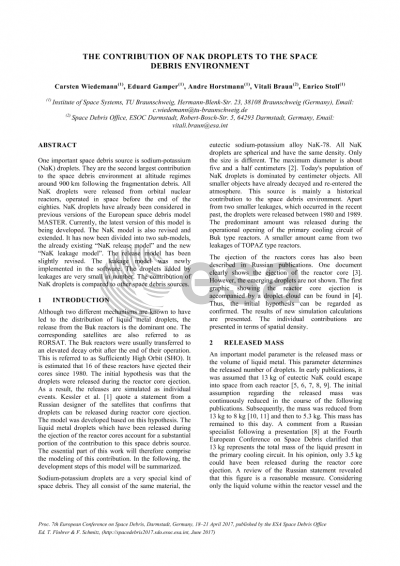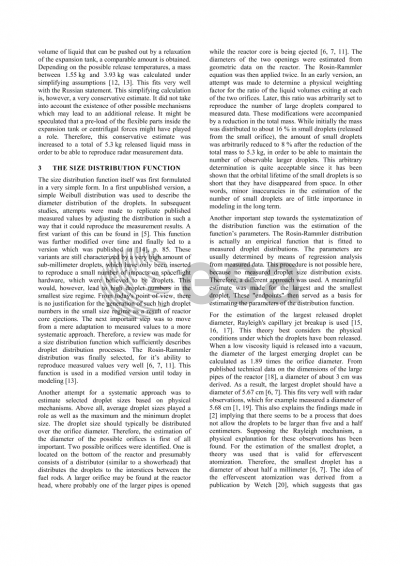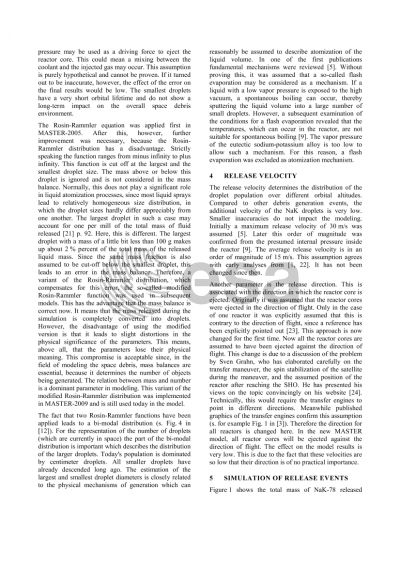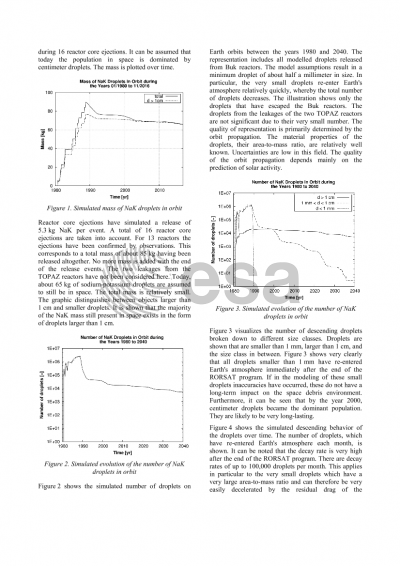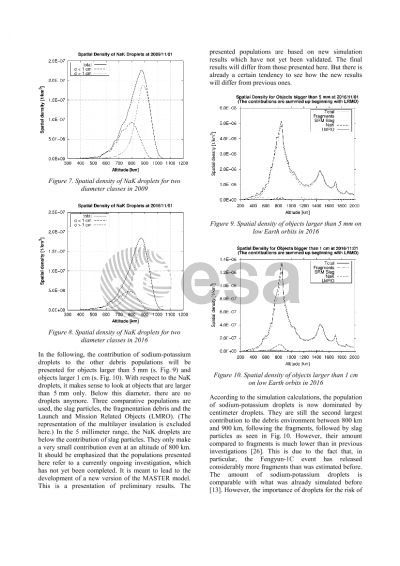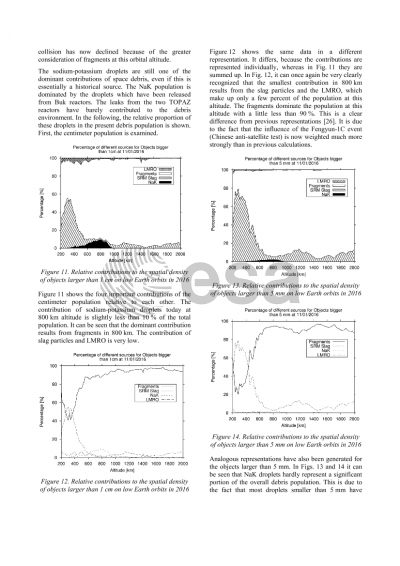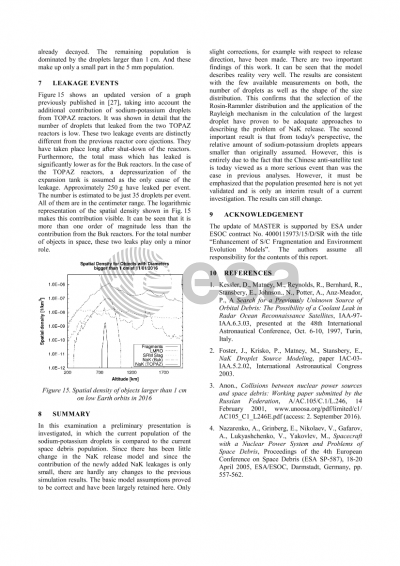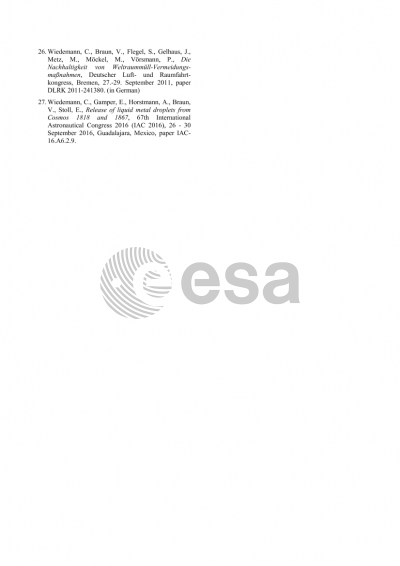Document details

Abstract
One of the important space debris sources is sodium-potassium droplets. They are the second largest contribution to the space debris environment at altitude regimes around 900 km following the fragmentation debris. Sodium-potassium droplets are a very special kind of space debris. They all consist of the same material, the eutectic sodium-potassium alloy NaK-78. All NaK droplets are spherical and have the same density. Only the size is different. The maximum diameter is about five and a half centimeters. Today's population of NaK droplets is dominated by centimeter objects. All smaller objects have already decayed and re-entered into the atmosphere. This source is mainly a historical contribution to the space debris environment. Apart from two smaller leakages which have occurred in the recent past, the major amount was released between 1980 and 1989. All NaK droplets have been released from orbital nuclear reactors, which were operated in space before the end of the eighties. The predominant amount was released during the operational opening of the primary cooling circuit of Buk type reactors. A smaller amount came from two leakages of TOPAZ type reactors. NaK droplets have already been considered in previous versions of the European space debris model MASTER. Currently, the latest version of this model is being developed. The NaK model is also revised and extended. The NaK model has now been divided into two sub-models, the already existing “NaK release model” and the new “NaK leakage model”. The release model has been slightly revised. The leakage model was newly implemented in the software. The droplets added by the leakages are very small in number. The contribution of the NaK droplets is compared with other space debris sources. The results of new simulation calculations are presented. The individual contributions are presented in terms of spatial density.
Preview
